John R. Fultz's Blog, page 41
March 28, 2023
Dog rescued after being thrown into the river with a heavy rock tied to neck
A rock was tied to the leg of the animal, which was comparable in size to its body. The dog probably had to struggle for many hours under the cold water before it could lift its head above the surface of the river.
Recently, a Belgian sheepdog was saved from the brink of death after enduring a horrifying experience intentionally caused by its owner.
Jane Harper was walking along the road with her friend when she suddenly saw something sticking out of the Trent River in Farndon, Nottinghamshire, England. After realizing that it was the head of a dog submerged in the water, Jane fearlessly dived into the freezing river to rescue the animal.
She approached the dog and tried to pull it to the shore but was unsuccessful. Jane said, “The water was very murky at that time, I tried my best but still couldn’t pull the dog out. I noticed that there was a string tied around its leg, attached to something heavy that sank to the bottom. I had to use both arms to support the dog and struggled a lot to lift it up.”
 Jane had to exert all her strength to lift the dog up to the shore.
Jane had to exert all her strength to lift the dog up to the shore.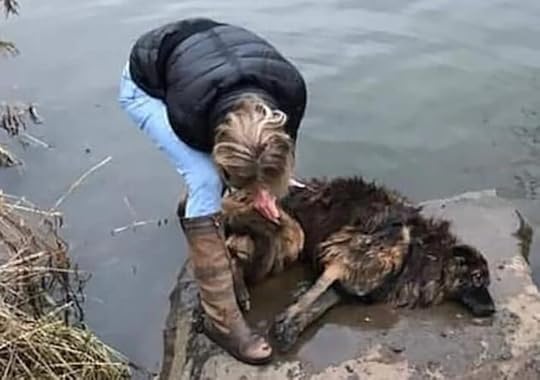 The dog was lying motionless from the cold and exhaustion.
The dog was lying motionless from the cold and exhaustion.After successfully bringing the dog to the shore, Jane realized that the heavy object tied to its leg was a large rock. The animal was nearly unconscious at that point. Initially, Jane thought it was dead until the poor creature tried to blink its eyes.
After administering first aid, Jane took the distressed animal to the veterinarian for care and treatment. The poor dog’s rescuer shared, “It must have exerted all its strength to lift its head above the surface of the water. I don’t know how long it was down there, but I think if it had been any later, it wouldn’t have survived.”
Jane and her friend also expressed their anger at the despicable act of the person who threw their pet into the river with a heavy rock tied to its leg.
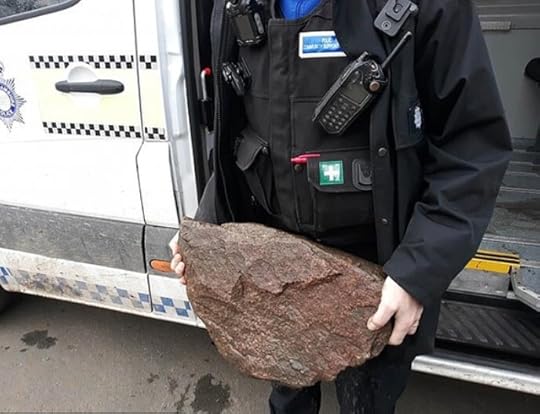 A rock was tied to the leg of the large dog, which was as big as its body.
A rock was tied to the leg of the large dog, which was as big as its body.Luckily, the police found a microchip on the animal dating back to 2010 and were able to identify both the dog’s name, Bella, and her owner. However, the current name of the dog may have been changed. They also arrested a couple, aged 31 and 32, suspected of committing a crime against the pet.
A Nottinghamshire police officer said they are still investigating the incident and urged residents in the area to provide any information they may have. They also praised Jane’s actions for timely rescuing the poor animal.
Bella is currently in a weak condition, but she has shown some signs of improvement, such as being willing to eat and receiving treatment.
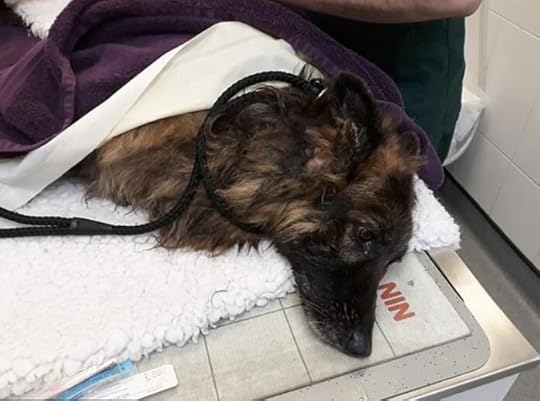 Bella is currently being taken care of by a veterinarian but is still quite weak.
Bella is currently being taken care of by a veterinarian but is still quite weak.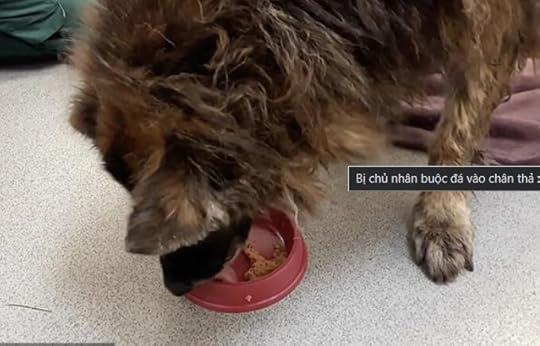 Bella has been eating a little bit.
Bella has been eating a little bit.The post Dog rescued after being thrown into the river with a heavy rock tied to neck appeared first on John's Blog.
March 21, 2023
Dog vomiting – See the main causes and what to do
Vomiting is a common reaction of the dog’s organism, but it can also be a warning sign when it is very recurrent.
Dog vomiting is a symptom that can be caused by several factors, from poor diet to the manifestation of serious illnesses. Observation is the key to discovering the severity of the cause.
Dogs’ digestive health is very fragile, their stomachs and intestines are sensitive and do not accept many types of food well. For this reason, it is important to always feed them in the best possible way, that is, with food suitable for dogs, such as dry food, vegetables without seasoning and fruits.
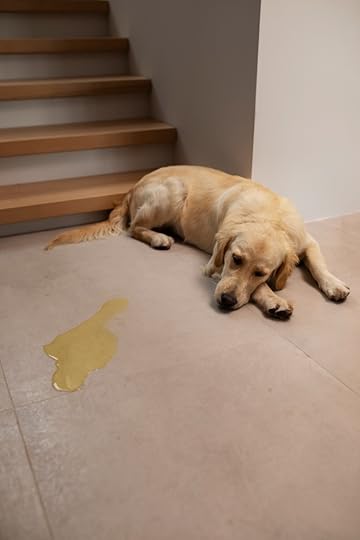
First, keep calm. Vomiting is not always a negative sign about the dog’s state of health. The organism of animals is extremely selective, so when dogs ingest toxic food or an object, the stomach causes vomiting as a way of expelling what is harmful. It is a defensive reaction.
However, vomiting can also be a symptom of a serious health problem or illness. It is very important to observe the dog’s behavior and if there are other signs that his health is not going well.
Before taking your dog to the vet, consider the following points to understand if vomiting is just a symptom of poor digestion or indicates something more serious.
How long has the dog been vomiting?It is essential to observe how many times the dog has vomited during the day and how long he has been vomiting. In addition, it is important to understand the frequency of this episode, for example, if it always occurs after meals or at random times of the day. It’s not normal for a dog to spend more than a day throwing up.
How is the vomiting?The color and consistency can indicate the presence of blood in the vomit. If the color of the vomit is too dark or does not match the color of the food that the puppy ate, you need to consider the possibility that the dog really is sick.
Is the dog listless?The dog’s behavior before and after vomiting also reveals the severity of the cause. If they remain listless all the time, they are probably in pain. If this behavior lasts for more than a day, it is a sign that the vomiting is not just a result of poor digestion.
Is vaccination up to date?This is an important issue, as many diseases that can be prevented through vaccination have vomiting as an initial symptom. Check your pet’s vaccination card.
Are there other symptoms?When vomiting occurs due to a health problem, it is usually accompanied by other symptoms. Diarrhea is the most common of these, followed by apathy, constant crying and unusual secretions.
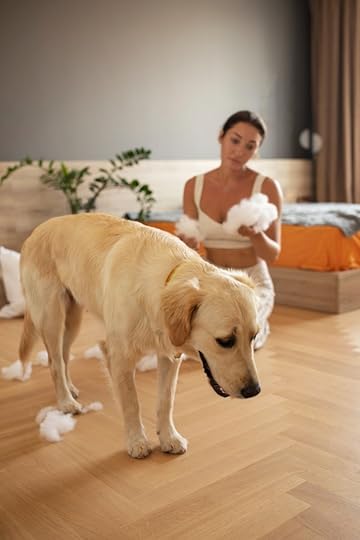
Due to vomiting, digestion of food is not done completely. In addition, the body is dehydrated. It is very important to try to maintain the dog’s hydration, it is a way to make him recover faster.
Most likely, he will not look for water or food due to the discomfort that vomiting causes. It is the owner’s responsibility to offer food while the dog is weak.
Check out recipes that can help with this task!
HydrationTake him to drink water every two hours, see how often he accepts the drink. If he refuses the water from the potty, fill a syringe with water and sneeze it into the dog’s mouth, carefully and little by little so as not to provoke more vomiting. Dogs love ice water and also coconut water, try it!
Sick dog food recipeHomemade food is much more attractive to the dog than dry food, especially at these times. In addition, a lighter and more natural diet greatly favors the recovery of the dog that is vomiting.
Ingredients
1 cup of rice100 g of chicken breast1 grated carrotMethod of preparation
Cook the rice and carrots without any kind of seasoning, just with a pinch of salt. Do the same with the chicken. Wait for the food to cool down, then shred the chicken and mix well with the carrot rice. Divide into portions suitable for your dog’s size. Always serve warm.
Fruits are allowed in the diet of the dog that is vomiting, as long as they are not acidic, such as pineapple, orange and passion fruit. Papaya and banana are good options.
Attention!!!If the dog shows no improvement and has other symptoms besides vomiting, take him to the vet. Never medicate your dog without medical guidance.
The post Dog vomiting – See the main causes and what to do appeared first on John's Blog.
How to know the age of the dog? See 5 useful tips
It is entirely possible to have a way of knowing the age of the dog, even when they are no longer puppies. Perhaps, this is one of the main doubts among people who like animals and often adopt a friend without having much information about it.
In dogs, age is very different than in humans. Some say that each year of an adult is equivalent to 7 years of a furry, however, some experts claim that this calculation method is not correct.
The fact is that in dogs, other factors are taken into account to determine the lifespan of a dog. The breed and size of man’s best friend are crucial to having an accurate calculation.
In general, small dogs live longer than larger ones, as the degeneration of their organs happens later.
The smallest live around 16 years, while the largest are already considered elderly between 9 and 12 years. To understand better, dogs that weigh up to 10 kg are small, those between 11 and 20 kg are medium, those between 21 and 40 kg are large, above that, they are in the giant category.
The best way to make this correct calculation is with the help of the veterinarian, he will know how to take all the factors into account to know exactly how long your puppy will live approximately.

Below, you will see how to detect the signs that reveal the age of the dog. Keep reading.
5 tips on how to know the age of the dogSome details on the dog must be evaluated to find out its canine age, generally, people who adopt the furry one or who find it on the street without any other record tend to use these techniques to know a little more about the dog in question.
According to veterinarians, the following signs need to be evaluated:
1- Puppies have fewer teeth than an adult dogAn adult dog has an average of 42 teeth, whereas a puppy has approximately 28 teeth. It’s already a good tip to know if the dog is young or in adulthood.
Of course, the number of teeth in dogs can vary greatly according to breed.
Dogs, like humans, are born without teeth. But in dogs, teeth start to come in after 3 weeks, that is, much faster than in babies.
At 4 months of age, these first teeth fall out and are replaced by definitive ones that are rounder, usually this happens up to 7 months.
In short, up to 8 weeks of life, puppies have 28 teeth and they are very sharp.
From the age of 7 months, puppies already have 42 well-rounded permanent teeth.
2- Pay attention to the color of your teethHow to know the age of the dog is relatively simple, above we saw the “number of teeth” between the puppy and the adult dog. Now, it’s essential to evaluate their coloring along with other characteristics to get a brief idea of their age.
As soon as the permanent teeth are born , at 7 months, they are rounded and very “WHITE”.
However, over the years, these characteristics change a lot, see:
Dogs from 1 to 2 years old – They have very firm teeth, however, the back teeth may have a slightly yellowish color.Dogs from 3 to 5 years old – At this stage, all the back and front teeth can be yellowish and also wear out.Dogs 5 to 10 years old – Teeth are very yellow and worn. Some dogs show signs of diseases such as cavities, red and swollen gums.Dogs 10 to 15 years old – Teeth well worn and with a lot of tartar that can be easily perceived with the naked eye. Also, some teeth may have fallen out.Therefore, the “number of teeth” and “coloring” are two important factors to calculate the dog’s age.
3- Pay attention to the coatSome physical signs are quite apparent in elderly dogs, as in humans with regard to hair, the coat changes color and the skin also loses elasticity.
The hair of elderly dogs turns gray or white especially in the muzzle and face region, later it spreads over the head and body.
4- Evaluate the dog’s eyes and muscle toneThe eyes also change over time, in older dogs they become more opaque, they look lifeless, quite different from young dogs that are brighter and without tears or any other type of secretion. Some senior dogs can develop cataracts.
Another important point is the development of muscles when he moves. If it is very slow and has difficulty walking and performing simple movements, it is quite possible that it is an elderly dog, as most dogs gain weight over time or they may be excessively thin, without muscles.
Younger dogs have more muscle tone because they move, run and walk more easily.
The difference is quite visible and can be easily noticed.
5- Clinical evaluationObviously, the best way to know the age of the dog is to take him to the veterinarian. The professional specializes in animals and may have a more accurate guess as to what the furry’s real lifespan would be.
In addition to using the assessment method mentioned above, he will also do “physical analysis and examinations” to get a better measure of:
BonesTogetherMusclesInternal organsThat way, you’ll know if the dog has any illnesses and other signs of aging.

The information on how to know the dog’s age is not out of simple curiosity, but it is necessary to understand how to take care of that puppy.
Puppies must be protected against diseases such as worms, parasites, hepatitis, various viruses and canine rabies, for this, it is important that the tutor keeps the vaccination booklet for pets strictly up to date.
As soon as he completes 30 days of life, he must be taken to the veterinarian, where examinations will be carried out for evaluation, where he will especially determine the exact moment of these vaccines.
In addition, other feeding details can be passed on, as from 2 months of age, they can already eat food and stop ingesting only milk.
From then on, all you have to do is take care of your puppy with love and affection, provide food and water, do daily activities, play a lot and take him to the vet once a year to monitor his health.
But, what about as time goes by?Inevitably, time does not stand still, both human beings and animals suffer from changes in their bodies and appearance.
In dogs, it is noticed immediately when he is elderly, in addition, he requires special care. Check out:
He is always very tired and sleepy;Does not have the vitality to play and practice physical activity;Urinary diseases are quite common;sagging and sagging skin;Yellow, worn and decayed teeth;Changes in weight, some breeds tend to put on more weight than others;Appearance of tumors and degenerative diseases;An elderly dog is more affectionate, serene and peaceful;Older dogs tend to get sicker easily, each breed has a different heredity, some may have an incidence of more cancer, others of kidney failure, arthritis, osteoarthritis, cataracts, among others.
Therefore, they are more dependent on their tutors to change their diet, lifestyle and make the appropriate treatment.
Senior dogs need attention, they should be walked constantly to encourage physical activity. Visits to the vet should be done at least once a year or in a shorter time, it will depend on each case.
Senior dogs also cannot eat just anything, they need a special feed that contains all the important nutrients to meet their daily needs.
Now that you already have an idea of how to know the age of the dog and also the care for each phase, take good care of your best friend. He deserves!
The post How to know the age of the dog? See 5 useful tips appeared first on John's Blog.
Injured dog paw pad – Learn how to treat the pads
Our best four-legged friends have very sensitive areas on their bodies. And one of them is pillows, which require special care. There are situations where we need to be aware of what can bring injuries to the dog s’ pads and all care is necessary. Find out in today’s article what are these care for the injured dog’s paw pad , the types of treatments for the wounds and also how to avoid them.
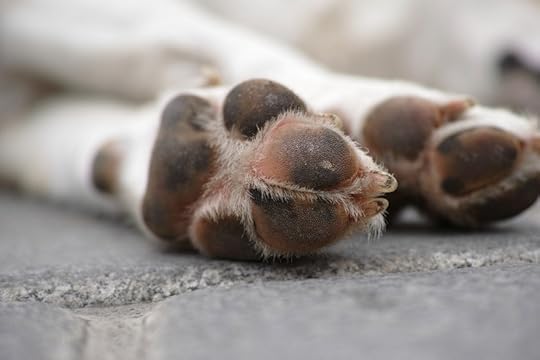
Coxins are popularly known as dog and cat pillows. They are the part underneath the paws, coated with a thicker and more resistant skin.
As it is one of the most sensitive regions of the body of dogs and cats, the pillows require special care, as they are the ones that are in contact with the ground and supporting the weight of the animals at all times.
It is extremely important that dog tutors avoid walks during the hottest hours of the day, many people forget how hot the ground is on the streets because they are paved, but your dog is not.
There are reports of cases of serious burns on the pads of dogs due to walks at inappropriate times. And since dogs don’t know how to show pain, we often don’t even realize he’s suffering from the hot floor.
The tours must be up to 10 am in the morning and after 6 pm, which is when the sun has already set. If it’s summer and you’re in doubt, try the temperature of the floor with the palm of your hand, so you’ll know if you’re going to burn your dog’s paws.
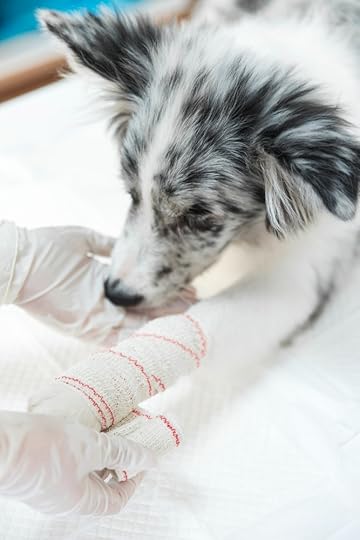
To treat an injured dog’s paw pad, you must first examine the area and verify that it was not a very serious wound.
Often the cushions can be injured because the dog stepped on glass, or pierced with some metal or nail, or scratched in an accident and it is necessary to check the seriousness of the case. If it is a mild wound, it can be treated and healed at home, if it is something that needs more serious treatment or if there is a shard of glass embedded in the pads, the ideal is to go straight to a veterinarian.
The first step is to clean the area with warm water and then, with an antiseptic suitable for pets, you should not use human medications on dogs, as it could make the situation even worse.
After cleaning the site, if necessary, apply some healing ointment and ideally wrap the paws with a sterile gauze so that the site remains clean and dry, so the healing time of the wound will be shorter.
As we know, one of the first things that the dog will try to do is lick or remove the dressings made on the pads, in these cases, the best way to avoid this is to put an Elizabethan collar on the pet to solve this problem.
The ideal for recovery is to keep your dog at home while the treatment is being carried out, to take him for walks in the street to relieve himself, put on shoes to protect the dressings from dirt.
It is important to change the dressings once a day, always cleaning the wound and observing its evolution.
Important tipObserve the pets’ cushions daily to be aware of the appearance of fungi or wounds. Our best four-legged friends will often not show pain and may be suffering from wounds in a sensitive place.
The post Injured dog paw pad – Learn how to treat the pads appeared first on John's Blog.
Fussy dog – How to calm and why he is like that?
Having an agitated dog at home is something that can worry some tutors a lot. Mostly dogs that live in small environments, like apartments, the daily hustle can even be dangerous for the dog’s health.
Therefore, it is essential to understand more about the subject and, above all, to look for some alternatives so that your puppy can be calmer and more peaceful.
However, doing this is not always easy. After all, there is no “pill” that makes the dog simply slow down. It is not in the short term that this problem will be solved. To solve a problem of agitation and hyperactivity, you need calm and patience.
Therefore, in this article, you will understand all this a little better. Read on to learn more about fussy dogs, why they get this way, and what you can do to help them.
Let’s go!

An agitated dog can be a reflection of many things. So, first of all, it’s important to be open to various possibilities.
That is, you cannot “fall in love” with only one alternative. But yes, you should consider the puppy’s entire life context, what he does and stops doing, age and stimuli.
To help you, we’ve separated a list of some of the more classic possibilities that can make a puppy agitated. See the list:
Lack of play and energy expenditure.Lack of interaction with the tutor on a daily basis.Negative stimuli that affect the dog’s psychology.Excessive and unbalanced eating.Lack of routine and too much randomness.Some breeds are more intense than others.To complement your knowledge and understanding of dog behavior, keep reading. Next, let’s explore each item on the list. Afterwards, we will understand what to do to help your puppy to be less agitated.
Follow along.
Lack of play and energy expenditureOne of the most likely situations that make your dog agitated is the lack of play and energy expenditure . In this case, it is almost an “action and reaction”. The action is to make the dog exhaustingly bored. The reaction is for him to become an agitated dog with signs of hyperactivity.
However, make no mistake. Simply “self-diagnosing” a dog with hyperactivity is not adequate. After all, hyperactivity is a reflection of many things, not just a hustle from energy retention.
So if your dog is very agitated, try to think about his routine: does he spend enough energy during the day? If he accumulates energy, he will be able to spend it in agitated situations inside the house.
Lack of interaction with the tutor on a daily basisAnother factor that can easily make a dog agitated is the lack of interaction with the tutor in everyday life. If you’re out all day and you leave your dog home alone, he’s going to miss you.
And more than that: he will feel bored and can channel that energy into things you don’t want to, like chewing on furniture or carrying slippers.
So even if you spend a lot of time outside, it’s important to set aside time to interact and play with your dog. And this cannot happen sporadically. It needs to happen every day. At least one hour a day, you need to reserve to interact and play with your puppy.
In certain cases, it is even possible to count on the help of a dog walker , who will take your dog for a walk and use up his energy. However, do not delegate everything to the dog walker, okay?
Negative stimuli that affect the dog’s psychologyIf you have an environment full of negative stimuli for your dog, know that this could directly affect the energy it accumulates. For example, a house with a direct view of the neighbor’s dogs is not very suitable for your little dog.
Also, if your puppy is socializing or not yet socialized, leaving him with lots of views of neighbors and people can be stressful.
Excessive and unbalanced eatingYes, a chubby dog is cuddly and awakens feelings of great love on the part of the tutors. However, simply feeding the dog randomly can make him extremely agitated.
After all, food is calories. And calorie is energy. One thing has to do with the other and, therefore, it is essential to create a suitable routine for feeding your pet.
Preferably, look for a nutritionist veterinarian to create a balanced diet for your dog. It can be natural food or with food. It doesn’t matter. The important thing is to offer food in the right amount for the animal.
This will make all the difference to the energy that the dog accumulates or not.

If there’s one thing dogs love, it’s routine. They love to know “what comes next” and therefore the tutor should be directly responsible for creating this proper routine.
Having time to go out, to sleep, to eat, to play and to make a mess, is what will dictate your pet’s quality of life.
Therefore, avoid situations of too much randomness and change. The more you can deliver a calm, peaceful and safe environment for the dog, the better. So have schedules and condition the dog to them. Changing environments, furniture and even home is something that makes the dog agitated.
Some races are more intense than othersIn addition to all these features presented so far, an agitated dog is also directly related to his breed. After all, there are breeds that are more agitated than others and you need to pay attention to this when adopting.
For example, dogs from activities such as herding or running tend to be more energetic. While guard dogs tend to be calmer and quieter. So study the breed you are going to adopt very well to know exactly how to take care of the animal.
Agitated dog – The age of the dog counts a lotAnd finally, we can’t forget the age of the dog. This factor is fundamental and, many times, there is not much to do.
After all, a young dog will have much more energy to spend than an elderly dog. Therefore, the tutor needs to know how to deal with, what to do and how to take care of his dog at different stages of his life.
Preferably, it is important that the tutor teaches basic dressage commands even in the puppy phase. This way, your puppy will be able to understand things better and you will have an important connection.
How to calm an agitated dogThere are numerous ways to calm a dog. And the best of them is to deal with it individually.
That is, do not “buy” a magic recipe on how to calm a dog. And much less bet on calming meds or something like that. Dogs have energy and they need to burn it: simple as that.
All drug interventions need to be strictly recommended by veterinarians. After all, the vast majority of the time, there is not a problem of hyperactivity. But yes, from bad habits.
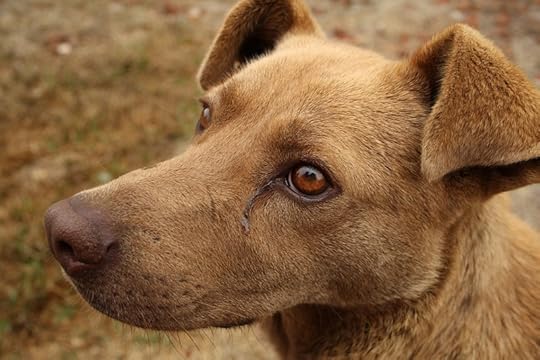
Here’s what you can do to help the fussy dog calm down:
Games and constant energy expenditure.Environmental enrichment and tutor interaction.Training and socialization.Next, learn the step by step of each situation.
Agitated Dog – Playing and constant energy expenditurePlaying and spending constant energy is what will make your dog “slow down”. That is, this is what will help the dog to feel more comfortable and calm in any environment.
Creating a routine of energy expenditure and constant play will make your dog feel much better. Although it takes time for him to adapt, if he doesn’t have this routine, know that this will be healthy and important for him.
Environmental enrichment and tutor interactionAnother very important factor for slowing down your dog is environmental enrichment.
This type of adaptation will help your pet to be much more active in situations that he can be. That is, with toys scattered around the house, even without the presence of the tutor.
Agitated dog – Training and socializationFinally, we cannot forget about dog socialization and training . By socializing the dog, you make him have important stimuli for mental health. And by training him, you offer the dog more quality of life and control over internal and external situations.
So now, consider our tips, put them into practice and always take good care of your best friend.
The post Fussy dog – How to calm and why he is like that? appeared first on John's Blog.
March 20, 2023
How to give a dog a pill? 5 tips that really work
Do you know how to give a dog a pill ? In most cases, dogs are very reluctant to take medication, especially those that are in the form of large tablets and have a very strong odor.
This becomes a difficult mission for the dog owner, however, it is necessary to learn the correct handling to offer the medicine in the animal’s mouth. Otherwise, he adopts mechanisms to spit the pill without the owner noticing.
Man’s best friend is very smart. Medicating it can be equated with the difficulty of how to offer vegetables to young children. It takes dexterity and techniques to deceive them, so they ingest it without realizing it.
If the dog is a puppy, angry or even hyperactive, naturally you will have more work, as they tend to spit.
However, you as a tutor need to learn, as most dog remedies are in pill form. When he gets sick, you must be prepared to help him.
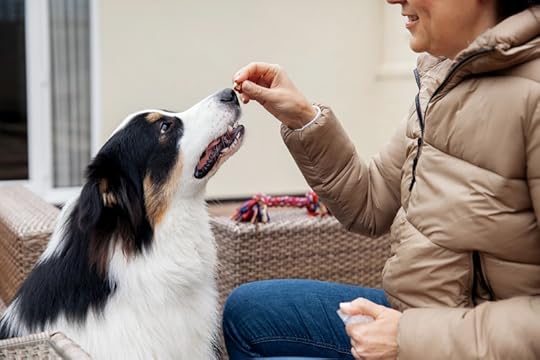
But take it easy! To the relief of tutors, there are techniques that make this mission easier and possible. Check out what vets say about it:
How to give pills to dogs in an uncomplicated wayIf you have a rebellious dog that refuses to take the medication, you need to train some techniques that will help you to take care of it. At first, it may seem difficult, however, soon you get enough skill to master it.
You need to understand that dogs don’t know and don’t understand that they need to take medicine to cure some illness. Therefore, it is practically necessary to somehow force the administration of these drugs, because you, as a tutor, know the importance of taking them.
Below are some dog pill tips that really work for all dogs. But, be patient and persist, that way, it won’t be a big difficulty to medicate him.
1- Use snacks as baitDogs love an out-of-hours treat . They just love to feel rewarded for something they do. Also, remember that they are attached to their owners, so they enjoy the playtime involved.
The first tip is to throw the pill at him as if it were a snack. Dogs in a hurry will swallow quickly as long as they don’t smell the pill.
Another more efficient way is to take two handfuls of the snack he likes the most, mix the pill in one of them and play the following game:
With the two packs of treats in both hands and very close to the dog’s muzzle, first offer the treat rolled up with the medicine and then give the other treat. The puppy is overcome by gluttony, because as he will be so eager to eat the second treat, he will quickly swallow the first, not realizing he has the pill.
This second tip is the best, especially if the dog has to take this medicine for more days.
Some tutors believe that mixing the pill in the feed can facilitate its ingestion. However, this strategy is already known to puppies and most of the time it does not work, because when the food is on the plate, before ingesting it, they sniff it.
Of course you can try, it will work, right?
2- Give the medicine in the mouthOne of the strategies on how to give a pill to a dog taught by veterinarians is to force the medication directly into the dog’s mouth .
This technique is used as a last resort, when none of the other ways worked. The dog needs to take the medicine, unfortunately if he doesn’t ingest it in another way, it will have to be like this.
You have to insist, it won’t always work on the first try. In certain situations, this action is necessary. To do this, open the animal’s mouth and try to immobilize it. Then push the pill down the puppy’s throat and close the puppy’s mouth.
To help, give him a light massage on his throat to make swallowing easier. Some experts suggest blowing the animal’s nose while it has its mouth closed.
To make sure the puppy swallowed the medicine, assess whether he licked his mouth.
The first few times, you may need someone else’s help to immobilize the pet. You have to do the procedure quickly, so as not to stress the dog.
3- Do the correct administration of the pillsThe dog’s recovery depends on following the treatment as prescribed by the veterinarian, and this is undoubtedly the owner’s responsibility.
Some people think that kneading the pill can make camouflage easier for the puppy to ingest. However, this rule does not work for everyone. Some are good pill detectors and may reject feed because of this.
Also, pay attention, as only pills that can be broken (capsules that have a line in the middle) and that serve to divide the dose. If in doubt, ask the veterinarian.
Dissolve the medicine , only if the specialist allows it, otherwise, do not do this, as it may reduce the effectiveness of the treatment.
Another recommendation is regarding manipulated capsules. Experts warn that they should not be opened to use the powder in food, as they were developed with the exact doses to be administered in the original presentation, that is, in capsules.

When you go to give snacks or play with your pet, naturally, you are happy and excited, he can see this in the intonation of your voice. This contagious energy must continue when administering the medication, otherwise the puppy will notice the difference.
Therefore, when you call the dog to play the snack with the medicine, be very excited, play games, because, according to experts, the best way to give the dog a pill is when they are distracted.
If the dog realizes that you are going towards him, seriously and with a pill in your hand, he will immediately run away, hide and become resistant to taking the medicine.
To avoid this, the best strategy is to use good humor, jokes and tricks with his favorite food to get his attention and make him swallow the pill. Banana is a great option to camouflage the remedy.
5- Use the “Go get it” gameEveryone knows that dogs love to play, for the more hyperactive ones this tip can work very well.
For this, the tutor should make a lot of fuss with his pet, call him excited to play, take him to a place with space to do the famous prank “Go get it”. Throw a treat, then a pill into the disguised treat, then a treat again.
There are already manufacturers of snacks that are making a kind of “medicine holder” precisely for these games. The pill is coupled inside the snack, making the dog not realize what he is ingesting.
But, the secret lies in the strategy of offering the medicine another snack, in this way, it makes those in a hurry swallow the medicine quickly.
The post How to give a dog a pill? 5 tips that really work appeared first on John's Blog.
Dog alone – Tips to make him happier!
Having a dog alone is often not an easy task: either on the physical or emotional side! If you also have problems leaving your dog alone for a long time while you work, follow this text and learn what you can do to alleviate the problem and, consequently, keep the animal more entertained and happy.
Dog alone – Tips to make him happierAre you sorry to leave your dog alone? There are reasons why this feeling dominates your day when you have to leave your lone pet at home. Thoughts go to him all the time. Whether you are adopting a dog now or even if he has been part of the family for a long time.
The fact is that these situations are unpleasant for both the owner and the animal. Yes, dogs miss their owner all the time. And it takes time for them to get used to the situation of living alone for some part of the day. A quality dog training needs to be done and maybe this will make the problems lessen.

But for you to be able to take some action about it, follow our tips and put them into practice. See below.
What is a gregarious dog?First of all, we need to understand what a gregarious dog is. Well, a gregarious dog is nothing more than a being that needs the company of another to live well. Then you must be wondering: what about street dogs? Well, stray dogs are extremely unhappy, as over time they get used to this situation and move from a sadness phase to an acceptance phase. But if it is a dog that has been raised for many years close to its owners, it may never get used to it.
And the same goes for our pets who are so well cared for indoors. As much as they have a much better quality of life than a stray dog, know that this does not take away our responsibility to keep them happy. And for this to happen even more completely, your presence is fundamental in his life. Only then will he feel safe, loved and cherished. Let’s go to the tips!
1- Don’t say long goodbyes when leaving for workThe first tip for your dog to have quieter lonely days is not to say goodbye too effusively in the morning when you leave for work. Dogs will go from a balanced level of joy to an extremely high level. And this is very harmful, because it is right at the moment when you will have to leave it.
So when you go out to work, just talk to him naturally and let him do what he’s doing. If he’s already entertained with something, even better. Because the more attention we give him, the more he will understand that that moment is fun. And in the long run, he will miss you so much right after the moment you leave. Maybe you’ll hear him cry as soon as you close the door!
So balance and little interaction at this point.
2- Don’t say long greetings when you get home from workAs well as keeping a balanced mood in the farewell, keep the same posture on arrival! While this may sound difficult (and it is!) because you’ve been waiting all day to see him, it’s important that it happen. But for what reason? Simple: the dog needs to understand that leaving and coming back is normal and nothing much will happen! For he cannot associate the extremities of loneliness with your presence: neither when you leave nor when you arrive.
After a few minutes at home, you will be able to interact with him more directly. Talk, play, feed, cuddle, etc. After all, he needs to feel that you love him. Otherwise, he will easily feel abandoned. Therefore, balance is necessary!
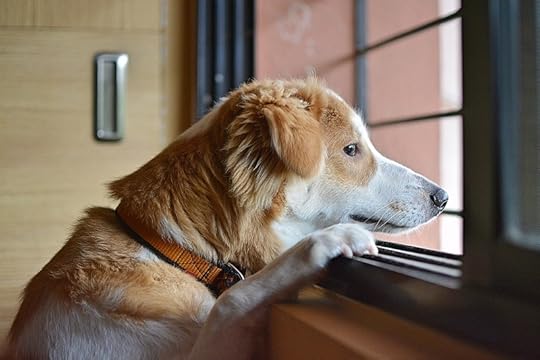
This tip is classic but very useful: leave toys around the house. A dog alone will look for alternatives to entertain itself. And often, curiosity will help in this process. This way, if you keep a toy in each room, he will be happy to find it and will play for a while without getting bored. And when you move on to the next room, it all starts again with a new toy!
One tip is to use toys with food. That is, encouraging the dog to interact for a long time with the toy until he can extract the food inside. This is a very practical and effective way to make a lonely dog feel happy and not even notice the time passing.
4- Hide kibble in rooms to entertain a dog aloneIn addition to food in toys, you can hide food in the rooms of the house. For example, a little under the bed, a little behind the curtain, near the sofa, anyway. Look for places where, when exploring, the dog finds a reward. This will make him walk and go around the house looking for these rewards and thus be able to entertain himself until his return.
With these tips, you will certainly be able to have a much less lonely dog. There is no magic recipe. Each breed is unique and will behave in a different way. Therefore, never dispense with professional help to work on your dog’s behavior in a way that provides much more quality of life, comfort and warmth. After all, all we want is for our dogs to be happy. And so we managed to have a peaceful and very productive day at work. Good luck!
The post Dog alone – Tips to make him happier! appeared first on John's Blog.
Dog with goose cough – What could it be?
A dog with goose cough is a dog that is certainly going through some health problems. After all, goose cough is really very “marking” and can scare tutors.
In this article, we will help you understand a little more about the famous goose cough in dogs. See how it happens, what causes it and how to treat it.
A dog with goose-cough could be experiencing some serious health issues, or it could just be something that will clear up on its own in a few days.
However, the tutor needs to pay close attention and take the necessary actions.
Keep reading!
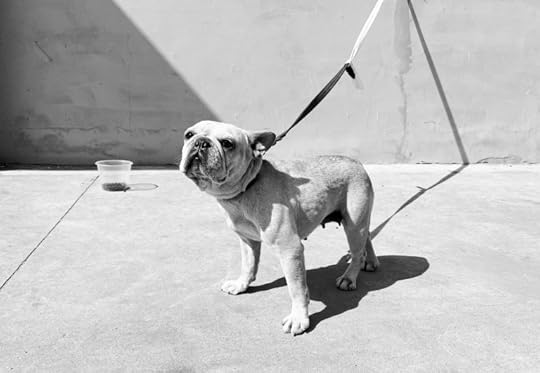
A dog with goose-cough may actually have a collapsed windpipe. That is, there may be some serious or non-serious problem occurring in your best friend’s windpipe. And that, of course, makes him cough in a different way.
Trachea collapse can happen in a number of different ways. However, the most common of them is when the dog swallows something half “crossed”. That is, when he swallows something that can block the windpipe.
In this case, the dog will have difficulty breathing and its goose cough is evidence of this respiratory difficulty. After all, the sound of coughing is almost not coming out.
Often a piece of food or any small particle is enough to cause goose cough in a dog. But at other times, the dog may need prompt service to remove any larger particles.
How to prevent your dog from having goose coughA dog with goose cough is synonymous with some serious or non-serious problem. After all, if he has a goose cough, you already know that he has a collapsed trachea – as we explained earlier.
A goose cough in a dog can happen precisely because of an obstruction in the trachea. And this obstruction can be mild, causing discomfort and making the dog cough until expelled, or it can be serious.
In any case, the best way to start treatment early is prevention. So, here are some tips on how to prevent your dog from having a goose cough:
Avoid hard plastic toys.Leather bones are not good options.Watch the speed at which the dog feeds.See if the dog gnawed anything inside the house.Below, understand more about each of the topics above.
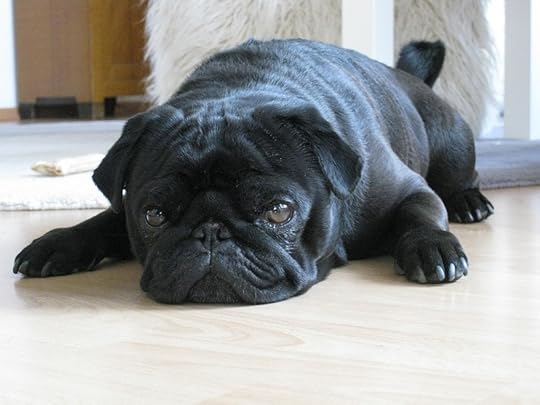
One of the best ways to prevent your dog from having a collapsed trachea and getting goose cough is by choosing his toys. As much as some toys are sold in pet shops, you need to observe them well before buying.
Hard plastic toys or toys that release parts are highly harmful to your best friend’s health. And therefore, it is very important that you avoid this type of object in the dog environment.
Hard plastic toys, even if they don’t have parts to loosen, can be chewed. The dog itself can “create” the parts to accidentally swallow.
Therefore, avoid this type of toy.
Leather bones are not good optionsMany tutors have doubts about the real safety of leather bones for dogs. After all, these bones are loved by dogs, since they can spend hours and hours biting and wasting energy .
However, beware: this type of toy/hobby is very dangerous for dogs. Leather bones, as harmless as they seem and don’t release parts, can even be lethal.
After all, the more the dog bites and drools the leather, the smoother the leather becomes. And before long, the smooth leather can accidentally slide down the pet’s throat.
In that case, the dog may have completely compromised breathing and may even die.
Observe the speed of how the dog feedsAnother determining factor for your best friend not to have goose cough is the speed at which he eats. That is, if the dog eats too fast, he can swallow a ration badly and then have a goose cough.
Therefore, a tip to prevent the dog from having a goose cough is: observe the dog’s feeding routine. See how he eats and pay attention to any interventions to reduce the speed of feeding.
When the dog is very anxious, he may chew too quickly and swallow the kibble almost entirely. Which is terrible for digestion and, of course, for the process of swallowing.
If you notice that your dog eats too quickly, offer less food and divide the portions into several.
Dog with goose cough – Avoid collars that are tight around the neckCollars, as much as they are made for dogs, can bring numerous problems for breathing and also for the safety of pets. After all, collars are meant to be worn comfortably.
So avoid tight collars. A dog with goose cough may have this type of cough precisely because of some tightness in the neck. It could be after a walk or some adventure in the park.
Any type of discomfort that causes the windpipe to collapse can leave the dog with goose cough.
See if the dog gnawed anything inside the houseDogs like to chew. It’s part of their routine and, especially puppies, will always look for something to “sharpen” their teeth and get to know this sensitivity.
However, the tutor needs to act so that the dog does not encounter problems chewing objects inside the house. And if he’s doing that, you have to act so he doesn’t do it anymore.
After all, a dog that gnaws at doors, pillows, slippers and furniture in general is a dog that has behavioral problems. These problems must be corrected with training and energy expenditure.
When you notice that the dog has a goose cough, make sure he hasn’t chewed something inside the house. If he gnawed, it could be that he has something stuck in his throat. Look for a veterinarian as soon as possible.
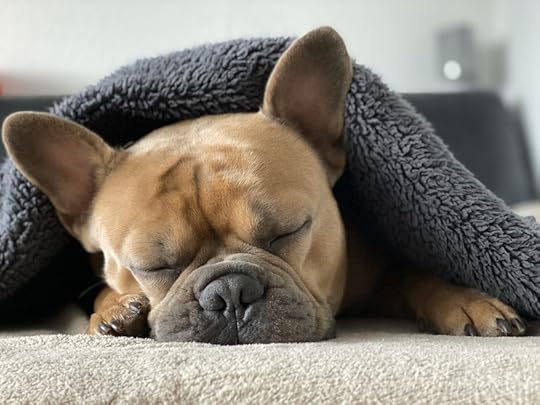
In addition to goose cough, your dog can still have other types of cough. After all, as we understood so far, a dog with goose cough has this type of cough because it has a collapse in the trachea.
That is, not necessarily he has a lung problem or something like that.
But there are some other types of cough that may indicate that the dog has other problems, such as canine flu or pneumonia . Here are some types of canine cough:
Dry cough: It is a type of contagious cough, as there is some virus in the dog’s respiratory system. Other symptoms along with a dry cough are sneezing, fever and lack of appetite.Wet cough: This also indicates problems in the respiratory system. It may have phlegm or blood. If so, it could be pneumonia or heart problems.Cough with horn sound: Caused by the use of collars that are too rigid. It can also cause breathing problems, much like in goose-cough.How to treat a dog with goose coughTo treat a dog with goose-cough, you need to consider some important points in care and prevention. See our prevention tips in the topics above.
If your dog already has goose cough, see these tips here:
Dog with Goose Cough – Take him to the VetFirst of all, you always need to consider a trip to the vet. As much as the goose cough can go away on its own, you still need to check what really happened.
A goose cough in a dog can symbolize some serious condition of trachea collapse. Some imaging tests may be required. Interventions with appropriate remedies, too.
Avoid home remediesHome remedies are not recommended. Never try to treat or “create” homemade remedies at home without knowing exactly what is going on with your dog.
If the vet recommends some kind of home treatment, then that’s fine: you can do it. However, do so only on the recommendation of the veterinarian.
The collapse of the trachea in goose cough can be aggravated if some homemade medication is offered to the dog.
Try to understand what happenedNever fail to understand what happened to your dog during a goose cough. After all, knowing what caused the cough, you can work to prevent it the next time.
Take the dog to the vet for an accurate diagnosis and take good care of your dog!
The post Dog with goose cough – What could it be? appeared first on John's Blog.
How to choose a dog for the house? Tips and complete guide
A big or small dog? With long or short hair? If you are in doubt about how to choose the dog for the house, you are in the right place!
There are many breeds available and each has its own characteristics. Some are good for an apartment and others are better to have a house with a backyard. To help you choose, continue reading!
Best dog for small apartmentApartments are usually quite small, but that’s no excuse for not having a puppy. The first thing to do is find out if dogs are allowed in your building and, if so, the size (small or large).

Whichever dog you choose for your apartment, know that you will have to walk him every day. Also, being locked up all day can stress you out a lot, so it’s good to choose a friend who doesn’t have as much energy. If you need to be away all day, it might be better to have 2 dogs to keep each other company.
The best apartment dogs are:
English bulldog;French bulldog;Pug ;German Spitz or Pomeranian;Shih Tzu;Lhasa Apso;Chihuahua;Cavalier King Charles Spaniel;Yorkshire Terrier;Maltese;Toy Poodle or Micro Toy Poodle;Bichon Frize;Pinscher;Boston terrier;Dachshund (sausage);Cocker Spaniel;Schnauzer.Best dog to stay indoorsSome breeds are great to be raised indoors. If you live in a small house or with little backyard, you can bet on one of the apartment dog breeds.
Generally, they are calmer and less noisy animals. That way it’s easier to take care of, since they don’t have much energy to spend. Generally speaking, the best dogs to live indoors are:
Boston terrier;Cavalier King Charles Spaniel;Pug;Schnauzer;Shih tzu;Scottish terrier;Bichon frize;Poodle;Maltese;Pomeranian Lulu;Yorkshire terrier;Japanese Spaniel.Best dog for big houseFirst of all, know that it is not good for the dog to live only in the backyard. It might be easier on the owner because he won’t jump in sight or chew on the furniture. But the animal will also not learn much if it only lives in the backyard.

Dogs that only stay in the backyard, without a walk, usually suffer from social isolation. With that they will bark and howl. They need human contact, regardless of size.
Generally speaking, dogs for large houses usually stay in the backyard. Therefore, it tends to opt for large animals. It should be noted that the size of the yard influences the choice of breed. If the backyard is small, it is interesting to opt for a dog with little energy. If the backyard is large, you can choose one with more energy, as it will have plenty of space to play and run around.
The most suitable dogs for this situation are sportsmen, workers, shepherds and terriers:
Golden retriever;Labrador ;Fox Paulistinha;Cocker Spaniel ;English pointer;Akita;Boxer;Doberman;Fila Brasileiro;Siberian Husky;St Bernard;German Shepherd;Border Collie;Shetland Sheepdog;Bull Terrier;Boston terrier;Jack Russel Terrier;Pitbull;Schnauzer.Easiest dog to care forEach animal has its particularities, and you won’t find one that requires little care. After all, everyone needs to eat, play, shower and make a mess. Some breeds end up being a little easier to take care of, as they learn quickly, don’t require as much care with their fur and others.
The breeds that tend to be the easiest are:
Golden retriever;Poodle;Labrador retriever;Cavalier King Charles;Boston terrier;Pug.
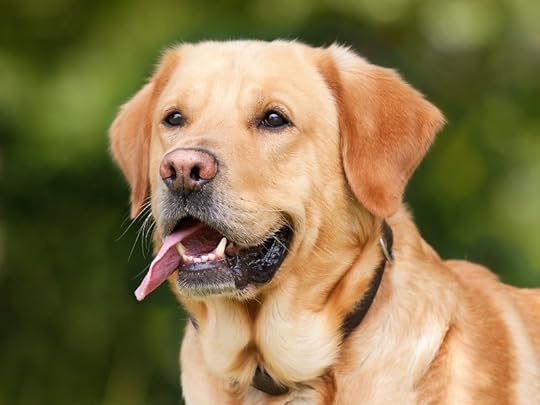
No dog likes to be alone and human presence makes them extremely happy! However, if you work a good part of the day, know that some breeds adapt better than others when their owners are away.
It is important to remember that even if they are fine alone, these dogs need the company of their owners, as well as care, food and a walk. Are they:
Schnauzer;Shih Tzu;Lhasa Apso;West Highlander Terrier;Basset Hound.Generally these breeds are more independent than others. But they are also affectionate and want attention from their best friends. Each one has its own characteristics, so it’s interesting to find out about each one before deciding.
Have you ever heard that the dog is usually the face of the owner? What happens is that before deciding on the breed of your new friend, you have to observe and choose the one that best suits your lifestyle. That is, your choice will certainly be a “dog with your face”!
The post How to choose a dog for the house? Tips and complete guide appeared first on John's Blog.
Osteoarthritis in dogs: The symptoms and recommended treatment
Osteoarthritis in dogs is a condition that especially affects the elderly and also those who are overweight. In the same way that it affects humans, the disease ends up with the quality of life of puppies, this happens because there is wear and tear on the joints.
The disease is considered degenerative, as there is an increase in joint fluid, cartilage erosion and osteophyte formation that generate chronic pain that is relieved only with certain medications, compresses and exercises.
However, there are other ways to ease the pain felt by puppies, however, for that, you need to take some radical measures such as: Changing food, eliminating excess weight and strengthening joint health.
It is important to note that osteoarthritis is different from arthritis. In arthrosis, the joint is affected chronically, that is, gradually. While in the case of arthritis, it is the inflammation of a joint in the form of crises, the pain may disappear after treatment.
However, both can occur on the wrists, knees, elbows. coxofemoral and in more aggravated cases, in the spine.

When a human is in pain, he speaks up and seeks medical help. However, puppies do not have this privilege, they depend on the owner’s eyes. Therefore, it is important to pay attention to behavior that indicates some abnormality.
The pain is chronic and progressive, it can significantly compromise the motor locomotion of the dogs, when in an advanced process.
However, right at the onset of symptoms, it may become more difficult to detect, as the dog tends to shift the weight of the diseased joint to another healthy one, only with the passage of time and the evolution of the disease, they may show some symptoms.
The first signs of osteoarthritis in dogs are usually:Walking harder;hunched posture;Difficulty making small movements;Denial when going up or down stairs, sometimes the owner may think it’s laziness, but it’s one of the symptoms of arthrosis;Apathy, the puppy no longer wants to play and walk;Very tired;Delay in getting up;Lack of appetite in some cases, especially when the pain is severe;When noticing any of these symptoms, it is essential to take the puppy to the veterinarian to verify through clinical and image exams what is happening.
Among experts, it is speculated that the main causes of arthrosis in dogs may be:
– Genetics – Hereditary factors are highly relevant in this regard, especially hip dysplasia, which is practically present in all large dogs. When the little animal grows quickly and becomes very large, it creates this predisposition to suffer from cartilage wear.
– Lifestyle – A sedentary lifestyle and being overweight take a heavy toll over the years, both in humans and dogs. Proof of this is that experts confirm that as soon as weight is lost, it is possible to notice a good improvement in pain.
– Age and breed – The old age of dogs can have some consequences on cartilage, in addition, there are breeds that are more predisposed to develop this condition, such as the German Shepherd, Labrador and Rottweiler.

In humans, osteoarthritis has no cure, only control, and in dogs, the condition is also irreversible. The goal of treatment is to slow the inflammation down and cause even more pain over time.
To improve the quality of life of the dog, veterinarians try to treat the root of the problem by stipulating some actions that are extremely necessary to alleviate the pain and the continuity of wear, they are:
1- Medicines to reduce painGenerally, the veterinarian assesses the need to indicate anti-inflammatories. Before that, natural remedies such as vitamins, minerals and collagen are taken into account, as these do not have unwanted side effects.
However, only specialists can indicate this treatment, it is not recommended to medicate the dog on its own, it could suffer serious consequences due to the side effects.
2- Insertion of physical activityAccording to specialists, dogs cannot stand still, they need to exercise their legs, as a sedentary lifestyle further damages arthrosis.
Obviously you can’t force the dog to run and do very intense activities, the goal is for him to take short and frequent walks, exercises to maintain strength, flexibility and muscle strengthening.
To help with the exercise program, it is essential to enlist the help of a dog physiotherapist or a veterinarian. That way, the risks of hurting your friend is reduced.
3- Overweight dogs should lose weightThe first measure that must be taken, if the puppy that is suffering from arthrosis is overweight, is to lose weight.
The veterinarian will evaluate the diet and indicate a special feed so that he loses weight in a healthy way and with that, reduces the pain significantly.
Weight loss is ranked as one of the most effective treatments for reducing osteoarthritis pain, as it helps prevent cartilage damage, thereby improving hand-eye coordination.
It is important that the measures are taken as soon as possible, as the delay can cause more damage to the cartilage, making it more difficult to return to movement and relieve pain.
4- Supplements and special dietSome experts recommend other measures to treat osteoarthritis in dogs , as there are some supplements that can help restore the quality of life of pets, they are:
Vitamin K2 – Reduces bone loss and significantly improves bone mineralization by preventing cartilage calcification;Hyaluronic Acid – Lubricates the cartilage and prevents the appearance of synovitis, a condition that aggravates joint pain;Omega 3 – Reduces inflammation in the body and protects cartilage from degradation;Glucosamine – Accelerates cartilaginous metabolism;Chondroitin sulfate – Acts in the control of enzymes that destroy cartilage, it is generally used simultaneously with glucosamine;In the diet, moderate consumption of fats and calories are also recommended to reduce weight and stress. In addition, the use of fiber and protein in meals is increased to increase satiety and muscle mass.
Through this dietary care, positive reports of improvement in the disposition and mobility of the puppies were presented.
5- Veterinary PhysiotherapyAnother very common format in treatment for osteoarthritis is physiotherapy, considered by many veterinarians to be the best way to end pain and improve the dog’s mobility.
The techniques used aim at the rehabilitation of the animal, where specialized professionals use safe strategies with the use of hands or specific equipment.
Massage in dogs, especially in older ones, is ideal for strengthening muscle tone, reducing flaccidity due to advanced age and improving blood circulation. In this way, it helps to reduce the stiffness of the joints and reduce the pain caused by osteoarthritis.
There are still strategies such as massage therapy, chiropractic, hydrotherapy, acupuncture , ozone therapy and electrotherapy that help keep the dog more active to perform simple activities.
6- Hot compressesApplying heat packs can help reduce the pain caused by osteoarthritis. You can also lightly massage the region and avoid high-impact exercises.
Pain relief will give more comfort to dogs, who are usually stressed and aggressive when seizures strike.
To do so, follow the instructions:
Put hot water in a bottle;Wrap in a towel;Place this rolled-up bottle against the puppy’s affected joint;You can leave it on top of his bed, to heat the place;Ideally, use the compress for 20 minutes, 3 times a day;Especially in winter, it is essential to keep the dog’s corner warm, as low temperatures tend to worsen joint pain.
7- Treat him with affectionKeep giving your puppy the same amount of attention, that way he won’t feel abandoned and sad. Usually, osteoarthritis in dogs causes eminent demotivation in pets, so it is essential that they still feel useful.
Play games that they can still participate in, encourage moderate physical activity and lovingly care for your pet. Remember that the only way to prevent the disease is a healthy routine, this includes physical activity, good nutrition and constant visits to the veterinarian.
Dogs that already have the predisposition to develop the problem should be cared for more carefully, especially not allowing them to gain too much weight.
Pay attention to your puppy, very sudden changes in behavior can suggest a number of illnesses. The sooner a problem is detected, the better the treatment prognosis.
For dogs that do not show any symptoms, the veterinarian can develop a control and supervision plan to monitor the appearance of diseases as the dog ages. Being one step ahead can be definitive in achieving quality of life.
The post Osteoarthritis in dogs: The symptoms and recommended treatment appeared first on John's Blog.



